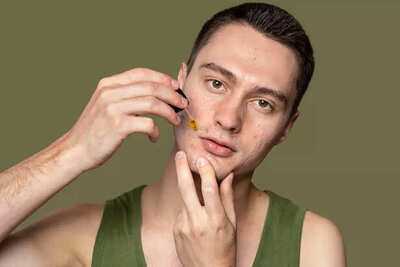Acne may heal but they leave dark spots which remain for weeks or even months that makes the skin look uneven and dull. These marks are very common, stubborn and often frustrating to deal with. The good news is that they can fade safely with the right care and ingredients. This guide breaks down the safest and the most effective ways to lighten acne dark spots without irritating the skin.
Why Acne Leaves Dark Spots Behind

Having dark spots
Acne leaves dark spots behind due to the condition called inflammatory hyperpigmentation which happens when inflammation from pimple triggers the skin to produce excess melanin.
Picking at pimples prolongs inflammation and increases the likelihood of post inflammatory hyperpigmentation.
People with darker skin tones have more active melanocytes making it more susceptible to post inflammatory hyperpigmentation.
Common Mistakes That Make Dark Spots Worse
Some skincare treatments and mistakes include:
- Not wearing broad spectrum sunscreen with at least SPF 30 daily is the biggest mistake as UV rays from the sun darken these spots creating new ones.
- Scrubbing too hard or using too many exfoliant products can damage the skin cells leading to inflammation and post inflammatory hyperpigmentation.
- Applying products to dry out the skin and hinder absorption can lead to irritation.
- Not addressing the main cause to treat underlying issues such as active acne before focusing on the resulting dark spots means the discoloration will likely continue.
Safe Skin Care Routine For Fading Acne Spots

Cleansing the face
Follow the following skincare routine:
In the morning:
- Use a gentle and non comedogenic cleanser to wash the face.
- A toner that can help balance the skin pH and prepare it for the next steps.
- Applying serum with ingredients like Vitamin C to brighten and even skin tone.
- Using a lightweight and hydrating moisturizer to keep the skin barrier strong.
- Applying broad spectrum SPF 30 or higher sunscreen to protect the skin from UV damage can worsen dark spots.
At night:
- If wearing makeup or heavy products start with a cleansing balm or oil to remove them before using regular cleanser.
- Wash the face with non comedogenic cleanser.
- Exfoliating to remove dead skin cells and promoting cell turnover.
- Applying serum with ingredients like retinoids, niacinamide or alpha arbutin to fade dark spots.
- Lastly apply moisturizer to support skin healing and maintain hydration.
Discover expert advice and the latest updates in Skin Care, Hair Care, Wellness, Dermatology, and more at Stay Young guide to lasting beauty and holistic health!
Frequently Asked Questions
How to tell if acne is hormonal?
Hormonal acne is indicated by the location of breakouts on the lower face (chin, jawline, cheeks), its persistence beyond the teenage years, and a cyclic pattern that worsens before menstruation. It often presents as deep, painful cysts or nodules rather than just whiteheads or blackheads and may not respond well to standard over-the-counter treatments. If you suspect hormonal acne, it's best to consult a dermatologist for a professional diagnosis and treatment plan.
At what age does hormonal acne start?
Most children and young adults between ages 11 and 30 will have acne at some point. Acne most often begins in puberty. But it can happen at any age. There are different types of acne that affect newborns, infants, younger children, and adults.
What do dermatologists recommend for acne?
Dermatologists recommend a range of treatments, including topical retinoids, benzoyl peroxide, salicylic acid, and topical or oral antibiotics for inflammation and bacteria. For more severe cases, prescription oral medications like spironolactone or isotretinoin may be prescribed, while in-office procedures like laser therapy, chemical peels, and steroid injections can treat scarring and severe inflammation. 

